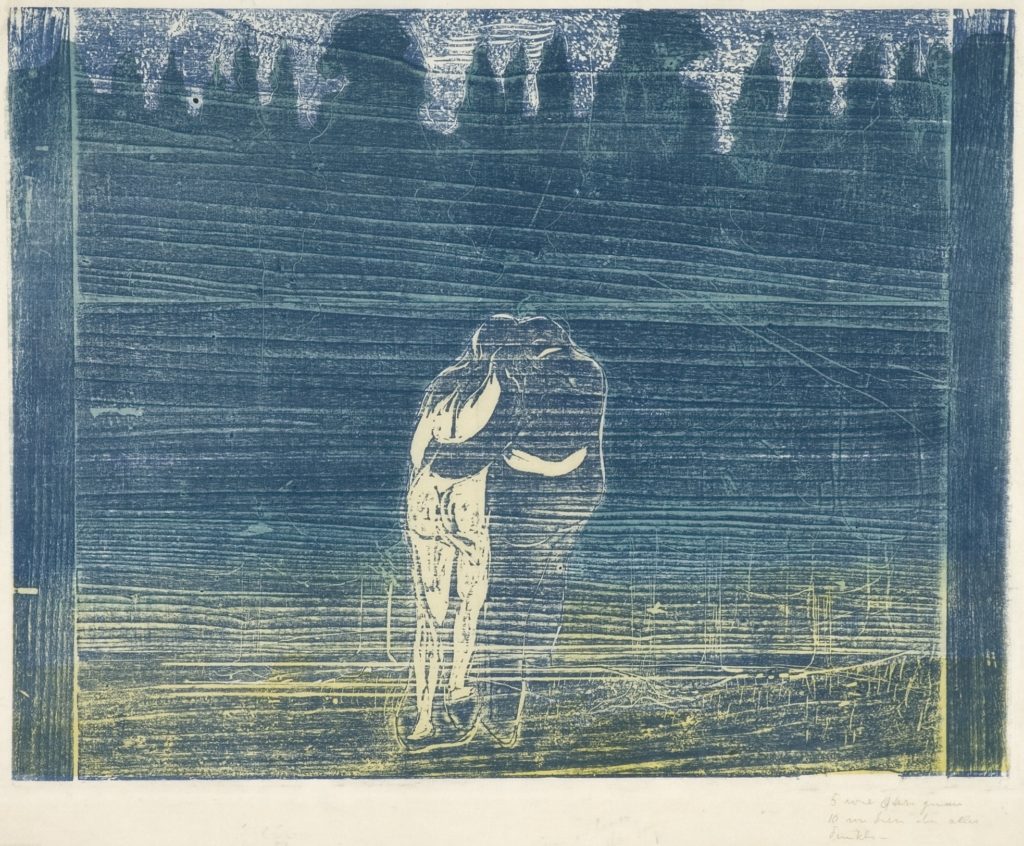Towards the Forest I

Edvard Munch’s (1863 – 1944) position in the history of Norwegian and international art is due not least to his unique and pioneering graphic art production. Around the middle of the 1890s he began experimenting with the various techniques of engraving, lithography and woodcut. Yet it is above all in the woodcut medium that Munch made his most original contributions. He diverged from traditional xylography, which had been used in reproduction graphics and, inspired by Paul Gauguin among others, he began to work along the grain of the block to produce his woodcuts. Instead of pressing the sheet of paper on successive inked plates in the conventional manner, Munch developed a unique method where he cut the block into pieces with a fretsaw. He then inked the various pieces in different colours and assembled them again before printing the whole block in one operation. Aside from being time-saving, the technique allowed for greater variation in the palette and contributed to tightening and simplifying the picture’s composition and style.
Towards the Forest (1897) reveals how Munch succeeds in exploiting the unique traits of the woodcut medium. For instance as we see it in the sawed line that separates the treetops from the sky, and in the way that the grain and the structure of the wood block is used to create a sense of atmosphere and damp haze along the forest floor. This motif is found in many different colour combinations that are occasionally very different from each other. It is the relationship between the couple in the foreground and the surrounding forest landscape, in particular, that is treated in various ways. In some versions the contrast and distance between the couple and nature is emphasised, while in this example the human figures nearly melt into and become one with nature.
In one of Munch’s literary notes there is a little passage that could well apply to Towards the Forest.
”They entered into an opening in the woods – on both sides tall spruces and birch trees stood – moist and dark against the evening air at dusk – the wet grass glittered. They walked back and forth in silence with bowed heads – the atmosphere around them was as solemn as in church. She leaned into him – rested her head on his shoulder – From time to time she pressed his arm to her breast. No, she was not angry at him – she was unhappy and he was to blame – what could he do – if only he knew – It is getting dark, he said. Yes – And how wet the grass is – no walk there – there it is better. He helped her over a puddle. Thank-you – she had placed his arm around her waist – holding each other’s hands. In the end he kept only one of her fingers and pressed it hard. He looked down at her – she looked as though she was going to cry. Was it – so terrible that we cared a little for each other – the words escaped him. She did not answer – but he felt the pressure of her hand”
OWG